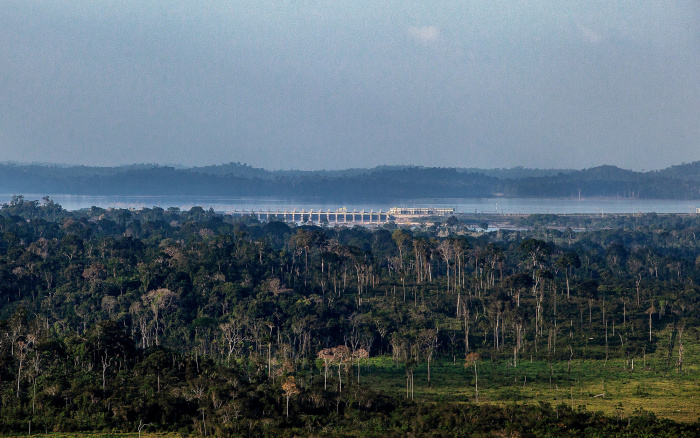Você está na versão anterior do website do ISA
Atenção
Essa é a versão antiga do site do ISA que ficou no ar até março de 2022. As informações institucionais aqui contidas podem estar desatualizadas. Acesse https://www.socioambiental.org para a versão atual.
Organization requests investigation after Norte Energia omits information about Belo Monte
quarta-feira, 09 de Março de 2022 
Esta notícia está associada ao Programa:
According to the document, market investors are lacking information about the environmental licensing process and, in particular, the so-called Hydrographic Consensus
The Instituto Socioambiental (ISA) has submitted a complaint to the Brazilian Securities and Exchange Commission (CVM) highlighting irregularities in the disclosure of information about the Belo Monte Hydroelectric Plant in communications made to investors by Norte Energia.
As of September 2020, the concessionaire of the power plant, built in the Xingu River Basin, has been registered with the CVM - an autarchy of the Ministry of Economy for regulating the financial market - and is subject to its informational regime.
According to the complaint filed by the organization, the information shared “regarding the environmental licensing process and, in particular, regarding the Belo Monte Hydroelectric Plant’s consensus, omits relevant information such as administrative and judicial decisions directly related to the matter.”
More about the Hydrographic Consensus
In one section of the complaint, the claimants argue that judicial decisions issued by the Federal Court of the Federal District and the TRF-1 (Federal Regional Court of the 1st Region), which ratified IBAMA’s (the Brazilian Institute of Environment and Renewable Natural Resources) decisions to alter the Hydrographic Consensus, were omitted by Norte Energia in communications to the market in December 2020 and January 2021.
In the complaint, it is also pointed out that “inconsistent, contradictory and omitted information regarding the differentiation between facts and the company’s own interpretations [were communicated], which may erroneously induce the market's evaluation of the potential risks related to the company and socio-environmental issues of its main undertaking”.
In a decision taken in December on the merits of the hydrogram caused by Public Civil Action, the 5th Panel of the TRF-1 unanimously upheld the first instance decision of the Federal Court of Altamira which determined the application of a sufficient Hydrographic Consensus for the riverine and indigenous ecosystems and communities in the Volta Grande do Xingu, different to the one advocated by Norte Energia.
The diverting of waters has already caused serious damage to the local ecosystem and there has been no spawning in the area for at least five years. IBAMA, which is responsible for environmental licensing, has recognised the inadequacy of the Hydrographic Consensus for impact mitigation in technical assessments since 2019, and requested complementary studies from Norte Energia in 2021, when they signed a Term of Environmental Commitment (TCA) for the application of Hydrographic Consensus B during 2021.
This Environmental Commitment Term expired on 31st January 2022, and IBAMA must issue a new technical opinion on the effectiveness of the Hydrographic Consensus from the analysis of the complementary studies.
Belo Monte’s 2009 Environmental Impact Assessment did not consider what the hydroelectric plant’s actual power generation capacity would be if it were forced to share the flow of the Xingu River under sufficient environmental conditions to guarantee the livelihoods of local communities and biodiversity.
ISA
Imagens:
Arquivos:
| Anexo | Tamanho |
|---|---|
| 435.46 KB |


